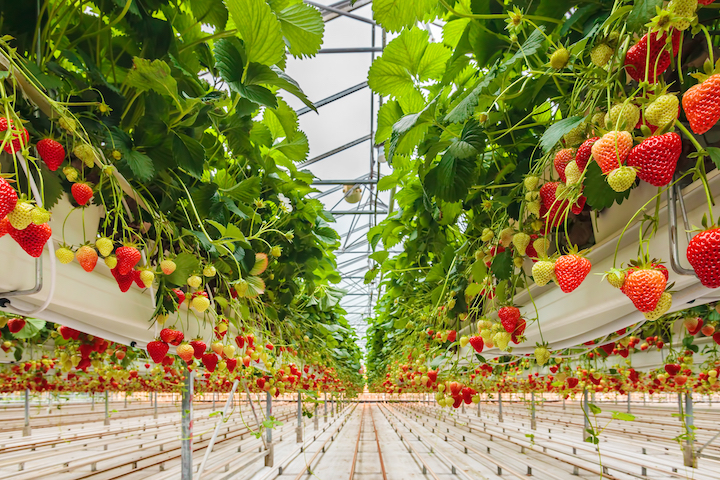The UV-C sanitation devices possess a remarkable germicidal power derived from ultraviolet radiation at a specific wavelength. Because of this, they have been applied in various sectors from sanitisation in hospitals and public places to the disinfection of water and air.
The same germicidal power could also be effective in agriculture to sanitise crops through ultraviolet rays. In this sense, operators in the sector are already experimenting with its use by conducting specific tests; for example, for the strawberry fields in Belgium and the Netherlands or for grape vines in Italy. The use of UV-C sanitisation technology for crops could, in fact, be a valid substitute for pesticides, reducing the use of chemicals in agriculture.
In this article we shed light on the introduction of UV-C germicidal technology in agriculture.
More specifically we will be talking about: :
Do you want to stay up-to-date with the latest news in the industry? Click below and subscribe to our newsletter!

UV-C agricultural sanitisation: anti-pesticide plant treatment
One of the problems encountered in agriculture is the excessive use of chemical pesticides used to neutralise pests and fungi that can cause serious damage to plants.
The use of pesticides on vegetables and fruit is not only poisonous, but also a pollutant. In recent years, a viable alternative that can be introduced in agriculture to control and avoid leaf diseases is being investigated. This is sanitising with UV-C LED's, a practice that needs special laboratory tests and scientific evaluation to be able to attest to its results, but which could prove to be effective and sustainable from an economic and environmental point of view.
Ultraviolet radiation, in the 100 nm - 280 nm spectrum, acts on the DNA or RNA of micro-organisms, breaking molecular bonds and preventing their reproduction. A UVC irradiation treatment, therefore, it may be effective in preventing plant diseases by counteracting the proliferation of pathogenic micro-organisms.
This new solution would involve the use of specially modulated and calibrated UV-C LED lamps that irradiate the crop with short-wavelength ultraviolet light via a customised mechanised transport. The UV-C rays directly hit the leaves and render the micro-organisms on the plant harmless.
The scientific research in this area affirms that ultraviolet radiation is effective in eliminating fungi, moulds and bacteria without altering or damaging the quality of the crop.
It should be borne in mind that the effectiveness of the LED UV-C solution varies depending on weather and climate conditions. Technically, the germicidal power of ultraviolet radiation should be greater at night, in the absence of sunlight, which would allow the pathogen's DNA to heal more easily.

UV-C disinfection technology for grape vines
As anticipated, the introduction of machinery capable of sanitising crops through ultraviolet rays could reduce the use of pesticides in agriculture. This application has great potential in the specific area of grape vines, where the use of UV-C LEDs would act directly on protection against fungi such as downy mildew and powdery mildew. The design of a sanitisation solution with UV-C LEDs for grape vines requires special feasibility studies and tests on the effectiveness of the light source as a devitalising agent for pathogenic fungi and small pests.
In conclusion, having a machine with special LED UV-C lamps, which sprays the vines with ultraviolet light when needed, can revolutionise plant protection in viticulture, allowing for pesticide-free wine.
At SLIM Srl, we provide our knowledge and expertise for the realisation of UV-C LED signalling solutions for various areas where this technology can be a viable alternative or supplement. We take up the challenges posed by the market and manufacturers to co-design cutting-edge and innovative solutions.
Are you interested in learning more about the development of a possible application with a UV-C LED solution? Click on the button below: our technical staff is available to evaluate your specific needs together.

